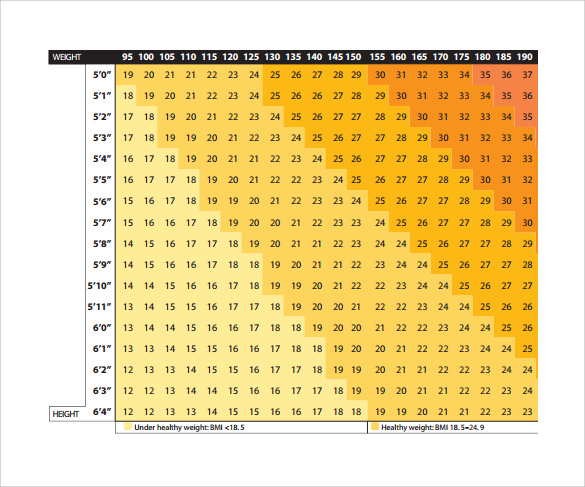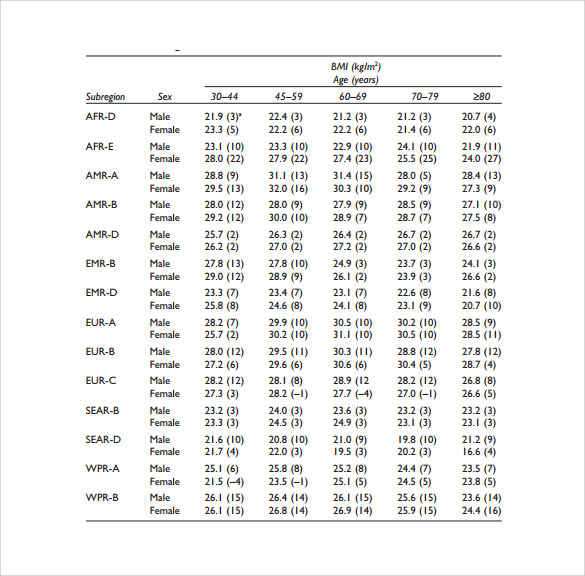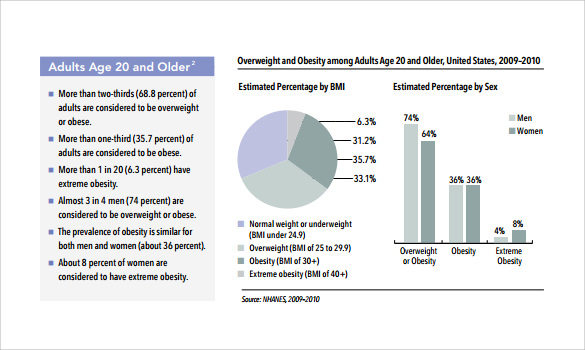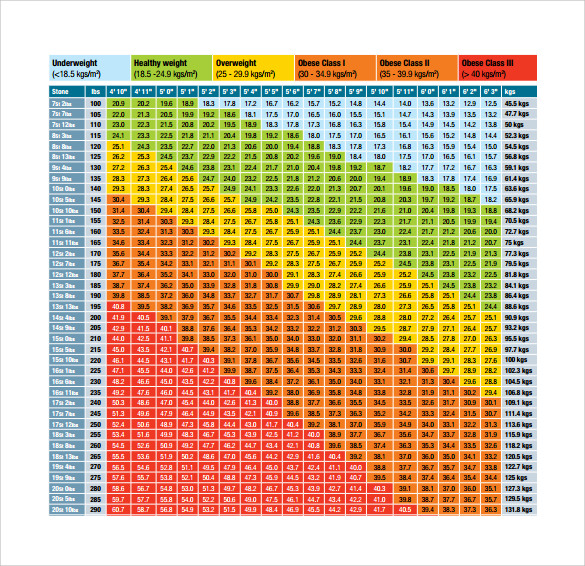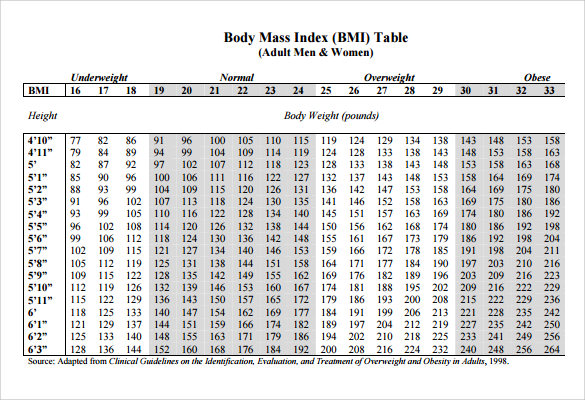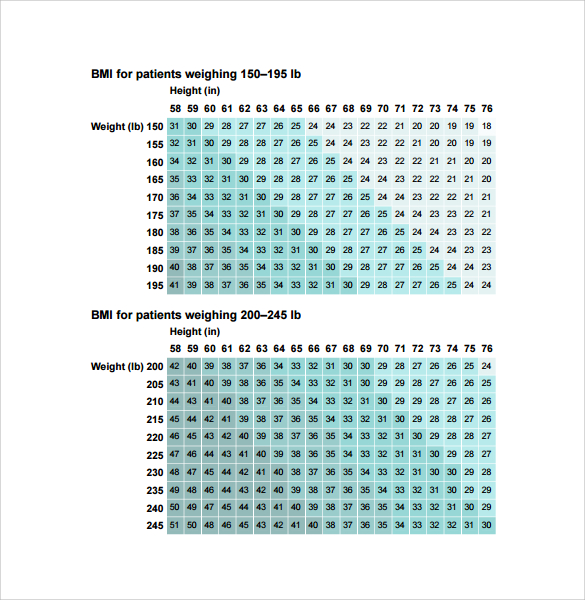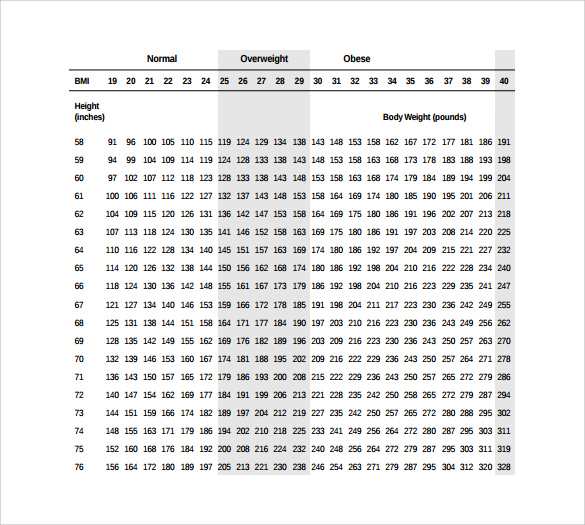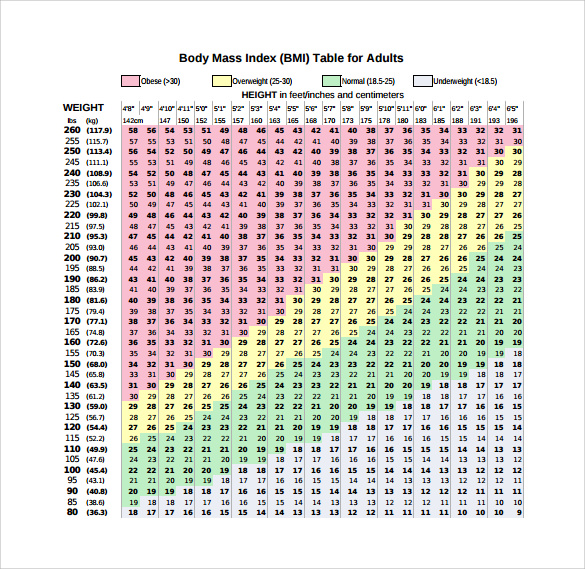BMI stands for body mass index. It is a measure that indicates whether or not a person is in a healthy weight range with respect to his height. So, it’s not the weight of an individual that completely determines whether or not he is fat; it’s how much he/she weighs for his/her height that is important and should be considered while declaring him under or over weight. Although, knowing your BMI is important, calculating it manually can be quite a chore. The good news is that this issue can easily be resolved with a BMI Sample Chart Templates.
Adult BMI Chart
As the name suggests, these charts compute BMI for only adults. Some of them serve both men and women, and certain others cater to the two genders separately. It’s always a better idea to refer to a gender specific BMI chart than following a general one. These chart templates are aesthetically pleasant and don’t, in any manner, look like medical documents. In beautiful warm hues, they look out-and-out lively.
BMI Charts for Teens Template
Most present-day teens are addicted to eating junk food that adds additional kilos to their weight. If you are a teen, it would be valuable for you to keep a check not only on your eating habits but also weight. But who tells you when to put the brakes on yourself? You can start using these charts for teen and keep a close check on your health. These templates come with additional tabs like ‘risk factors,’ ‘dos and do not’s,’ etc., that are highly useful in keeping a check on your health habits.
Overweight and Obesity BMI Chart
Are you fat? If yes, then it’s high time for you to find out what weight you should be with respect to your height. Here, overweight and obesity templates can help you. They are extremely important if you are obese, and it can effectively help you in reducing your weight. To refer this chart, you must know your value, which you can find in any chart. They have vital statistical data that throw light on the global scenario concerning obesity.
Children’s BMI Chart
Download BMI Chart Template
BMI Chart Template
Sample BMI Chart
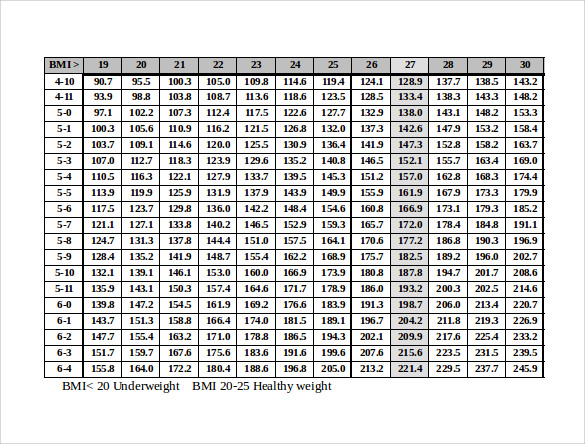
BMI Chart
Body Mass Index Chart
Importance of BMI Chart Templates:
These templates come handy when you are worried about your weight and want to find out if it’s normal for your height so that your food intake and other lifestyle choices can be controlled. Some of these templates offer valuable information regarding weight and issues linked to it. Additional pie charts, bar diagrams, and general statistics make these charts more enriched and a must-have for every health conscious individual, notwithstanding age and sex. Also, the fact, that children are more inclined towards calorie rich food items like sweets makes using these charts indispensable even for your kids.
These templates are extremely useful and should be made an important part of your health care regime. You can download them in either Word or pdf format. Printing them out is super easy, and the printouts come clear and legible. The best part is that all this happens within your budget. So, what are you waiting for? Download them and join the global health bandwagon.
If you have any DMCA issues on this post, please contact us!
Related Posts
Weekly Schedule Samples & Templates
Contractual Agreement Samples & Templates
FREE 9+ Amazing Sample Church Bulletin Templates in PSD | PDF
Sample Business Card Templates
Sample Cashier Job Descriptions
Questionnaire Samples
FREE 10+ Sample HR Resource Templates in PDF
FREE 10+ HR Consulting Business Plan Samples in MS Word | Google Docs | Pages | PDF
FREE 49+ Sample Job Descriptions in PDF | MS Word
FREE 16+ Nonprofit Budget Samples in PDF | MS Word | Excel | Google Docs | Google Sheets | Numbers | Pages
FREE 13+ Academic Calendar Templates in Google Docs | MS Word | Pages | PDF
FREE 10+ How to Create an Executive Summary Samples in Google Docs | MS Word | Pages | PDF
FREE 23+ Sample Event Calendar Templates in PDF | MS Word | Google Docs | Apple Pages
Company Profile Samples
FREE 10+ Leadership Report Samples [ Development, Training, Camp ]
